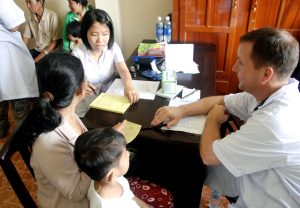Family Systems Theory
The Family Systems Theory assumes that a family is understood best by examining the family as one whole system. This one system is a complex, deeply-connected changing collection of parts, subsystems and family members, where each member has a known purpose or function.[1]
Other key concepts within the Family Systems Theory include:
- boundaries (e.g., who is a member of the system),
- equilibrium (e.g., during stressors or crises, the system attempts to return to its original state wherein members are functional and comfortable), and
- bidirectional (e.g., a change with one member will impact at least one other member, and hence impact the whole system).
Based on this theory, individuals experiencing a crisis or problem are best-served by assessments that include other members of the system as opposed to examining only one family member.[2]
This theory also assumes that families can examine their own processes and set deliberate goals. Change can occur when a family system acknowledges that a particular family pattern is dysfunctional and identifies new processes that support the family’s goals. Resettlement is one example of a large change that a family system may choose or be forced to make.

In order to assess patterns of adjustment in families that have resettled into a new country, we must examine the structure of the family unit and the processes that occur within that family system.
For example, one study collected data from parents and their children who immigrated to the United States from Vietnam and Cambodia to assess the role of family processes in disagreements over cultural values. The researchers found that cultural clashes were linked to parent-child conflict, which in turn was linked to reduced parent-child bonding, both of which increase adolescent behavioral problems.[3]This demonstrates one family pattern related to resettlement that is best understood at the family system level.[4]
Key Takeaways
- A family is a whole, complex, single system; each member’s behaviors can impact another member.
- Key concepts—boundaries, equilibrium, bidirectional, patterns, roles, and functions.
- Hammond, R., Cheney, P., & Pearsey, R. (2015). Sociology of the Family Textbook. Rocky Ridge Press. http://freesociologybooks.com/. ↵
- Bowen, M. (1978). Family therapy in clinical practice. Jason Aronson. ↵
- Choi, Y., He, M., & Harachi, T. W. (2008). Intergenerational cultural dissonance, family conflict, parent-child bonding, and youth antisocial behaviors among Vietnamese and Cambodian immigrant families. Journal of Youth and Adolescence, 37(1), 85-96. ↵
- This text is taken from Family Theories: A New Direction for Research with Resettled Populations by Jaime Ballard, Elizabeth Wieling, Lekie Dwanyen, and Catherine Solheim, used under a CC BY NC 4.0 license. ↵

